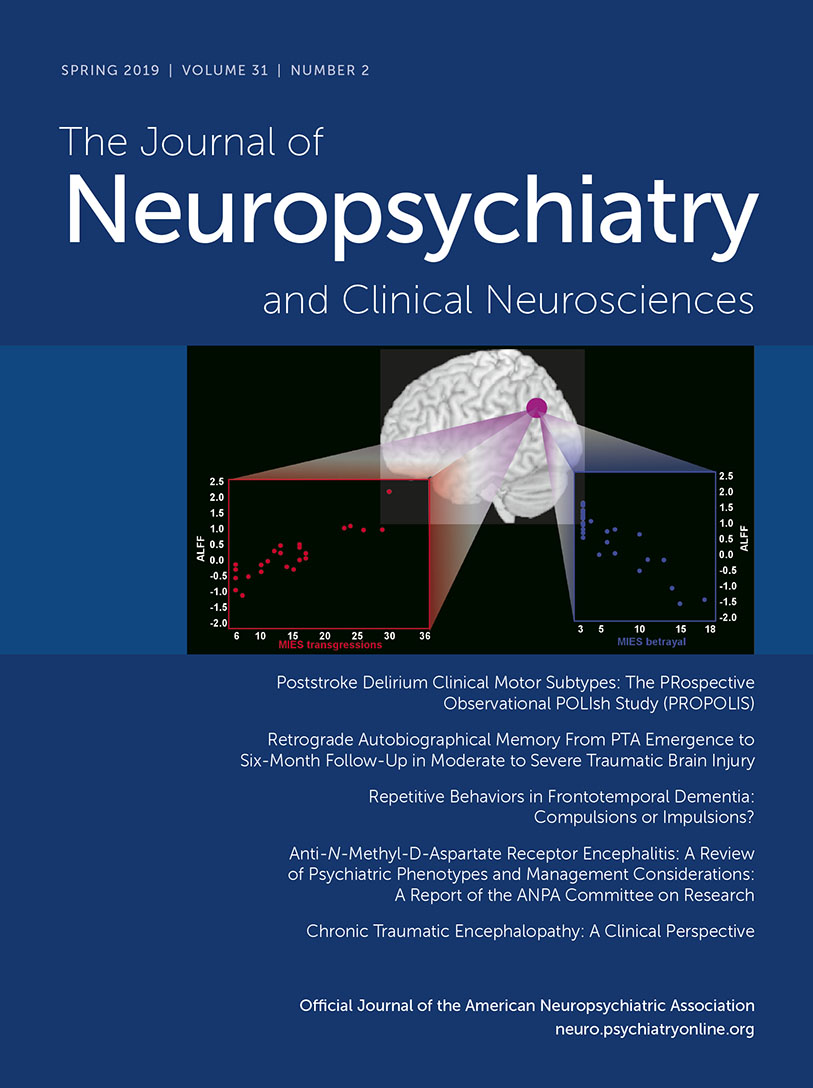Repetitive Behaviors in Frontotemporal Dementia: Compulsions or Impulsions?
Abstract
Objective:
The presence of repetitive behaviors is one of the core criteria for behavioral variant frontotemporal dementia (bvFTD). Patients with bvFTD often have perseverative, stereotyped, or compulsive-ritualistic behavior as an early aspect of their disorder. It is unclear whether such behaviors are related to compulsions, as in obsessive-compulsive disorder (OCD), or are part of the impulse disorder spectrum.
Methods:
The authors investigated early (within 3 years) repetitive behaviors among 93 well-characterized patients who met International Consensus Criteria for clinically probable bvFTD and compared the results with the literature on OCD. The most common repetitive behaviors among 59 (63.4%) bvFTD patients were stereotypies of speech (35.5%), simple repetitive movements (15.2%−18.6%), hoarding and collecting (16.9%), and excessive or unnecessary trips to the bathroom (13.5%).
Results:
Only hoarding and collecting was significantly common in both bvFTD and OCD; otherwise, the bvFTD patients had very low frequencies of the common OCD behaviors of checking, cleaning, counting, and ordering. The repetitive behaviors in bvFTD were not associated with verbalized anxiety, obsessional ideation, or reports of relief after completing the act. In contrast, these behaviors were often triggered by environmental stimuli and could be temporarily prevented from completion without undue distress. Finally, among the bvFTD patients, the repetitive behaviors were always associated with impulsive or disinhibited behaviors, such as inappropriate verbal or physical behavior.
Conclusions:
These findings suggest that the repetitive behaviors in bvFTD are repetitive impulsions, possibly from specific involvement of frontostriatal-anterior temporal pathology.



